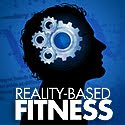
I've always been interested in so-called "alternative medicine." Growing up in Santa Fe, New Mexico, which in my opinion is a mecca of alternative and supernatural belief systems, I was exposed to a lot of various treatments and approaches to healing and wellness. One such system that I had performed on me while in high school for some sports injuries was
acupuncture. What Is Acupuncture?
Acupuncture is the ancient Chinese medical technique of inserting needles into so-called "acupuncture points" to unblock the flow of a vital life force the Chinese referred to as "chi." In the ancient Chinese medical system, chi is the natural energy of the universe and is said to permeate all things including living organisms like the animals and humans. The end goal of acupuncture treatments is to balance yin and yang, the two primal cosmic principles of the Universe. Yin is referred to as the passive, feminine principle, while yang is the active, or masculine principle (see symbol at beginning of post). Balancing the yin and yang is akin to the Western Medical principle of homeostasis.
When a person is healthy (or in "balance" from the ancient Chinese medical standpoint), the chi is said to be flowing smoothly through 14 primary pathways known as meridians. On the other hand, if a person is sick or injured, this so-called chi is said to be blocked somewhere in the pathways of these meridians. When acupuncture needles are then placed at key points of blockage (acupuncture points), the chi is supposedly unblocked and can once again flow freely, restoring health and balancing yin and yang. While this sounds nice, is there any proof to back up these ancient (anywhere from 2000-4000 years old) Chinese medical principles?
What Does Science Say About Chi?
According to Scientific inquiry into acupuncture, the concept of chi has yet to be proven. It seems as if chi is more of a supernatural understanding of health in the body, and this makes sense to me since 2000 years ago they probably didn't have a very good understanding of the body like we do now. As a massage therapist, I am frequently asked by clients what I think about acupuncture. I usually answer:
"acupuncture (and the concept of "Chi") is just a 2000 year old explanation of
what we now have many different theories and understandings into how the
human body functions."
Take the concept of trigger points for example. 50-70% of known trigger points actually lie on or near specific acupuncture points. To me this proves the Ancient Chinese were on to something, but we've greatly surpassed their knowledge level of anatomy and physiology. Instead of mystical blockages of chi, disruptions in blood flow have been found in trigger points as well as changes in internal muscle cell chemistry. This disruption of proper blood flow in and out of tissues can result in ischemia (lack of blood which leads to lack of oxygen or hypoxia). This often leads to some levels of pain or discomfort in the affected tissues. Proper massage techniques and/or stretching can often relieve the ischemia and the resultant discomfort.
Perhaps this is what the Chinese were unknowingly referring to; not some mystical universal energy (kind of reminds of the "force" in Star Wars movies), but blood and the good stuff it carries: oxygen, nutrients, immune cells, hormones, etc..
What Does Acupuncture Do?
OK, if the general consensus in the scientific community is that chi does not exist, then what does acupuncture actually do? Clearly there is some kind of physical stimulus as needles enter the body (although only very superficially) and surely all the people who sear by acupuncture can't be lying about the benefits they've received from it. When looking at the scientific research, most of the health claims from acupuncture fall short and fail to provide ample evidence to recommend acupuncture as a form or treatment for various conditions. However, there does appear to be some limited evidence that acupuncture can be effective in the treatment of pain. But get this, it really doesn't matter where you put the needles! That's right, just put the needles anywhere and you can stimulate an endorphin release in your brain that may help chronic pain. Additionally, there may be a placebo effect associated with acupuncture that makes it useful to continue to
More On Acupuncture
I want to end this blog post by giving you some excellent evidence-based critiques of acupuncture:
Check out this web page from Robert Caroll's The Skeptics Dictionary on acupuncture:
Scroll down to the bottom of the page to see a YouTube clip on chi and martial arts....very interesting!




 After several years of waiting, I am excited to FINALLY be taking the RKC (Russian Kettlebell Certification) Course. Afterall, my twin brother Franz is a team leader as is my friend Josh Henkin. This upcoming course will take place in San Jose, CA from February 15th-17th.
After several years of waiting, I am excited to FINALLY be taking the RKC (Russian Kettlebell Certification) Course. Afterall, my twin brother Franz is a team leader as is my friend Josh Henkin. This upcoming course will take place in San Jose, CA from February 15th-17th. I've always been interested in so-called "alternative medicine." Growing up in Santa Fe, New Mexico, which in my opinion is a mecca of alternative and supernatural belief systems, I was exposed to a lot of various treatments and approaches to healing and wellness. One such system that I had performed on me while in high school for some sports injuries was acupuncture.
I've always been interested in so-called "alternative medicine." Growing up in Santa Fe, New Mexico, which in my opinion is a mecca of alternative and supernatural belief systems, I was exposed to a lot of various treatments and approaches to healing and wellness. One such system that I had performed on me while in high school for some sports injuries was acupuncture. 

